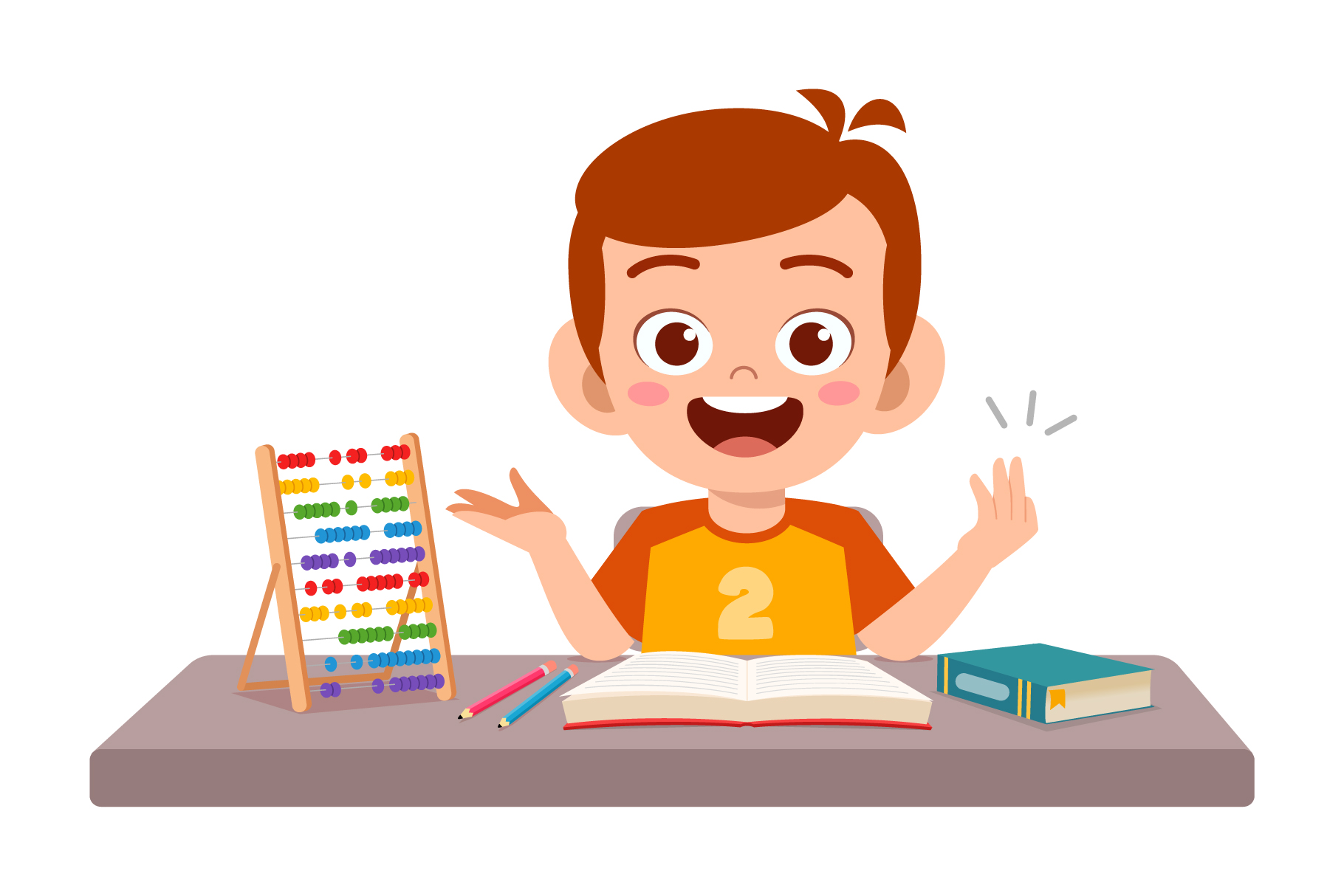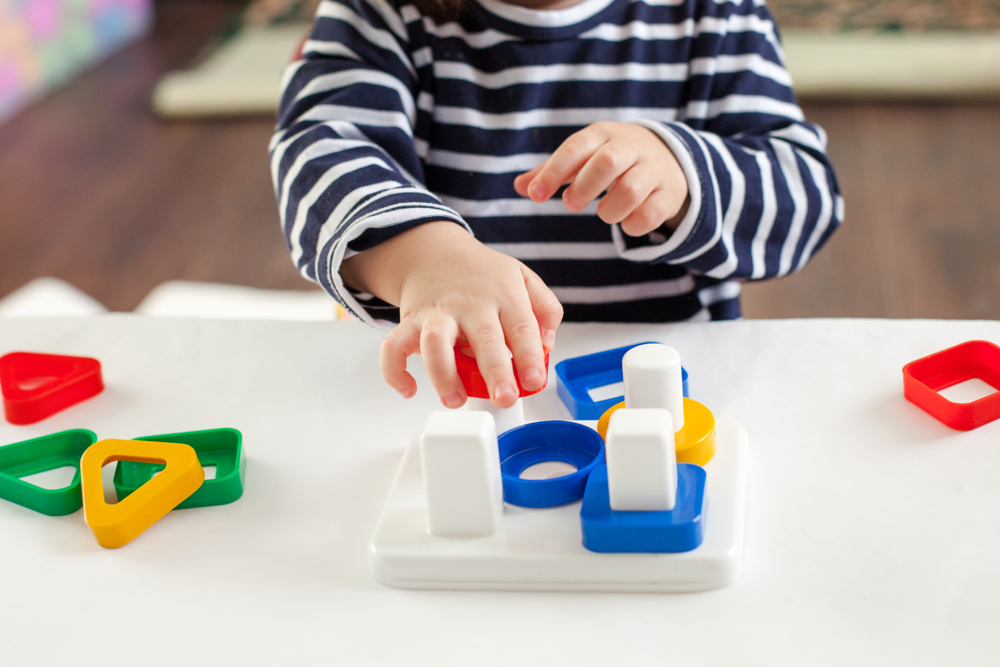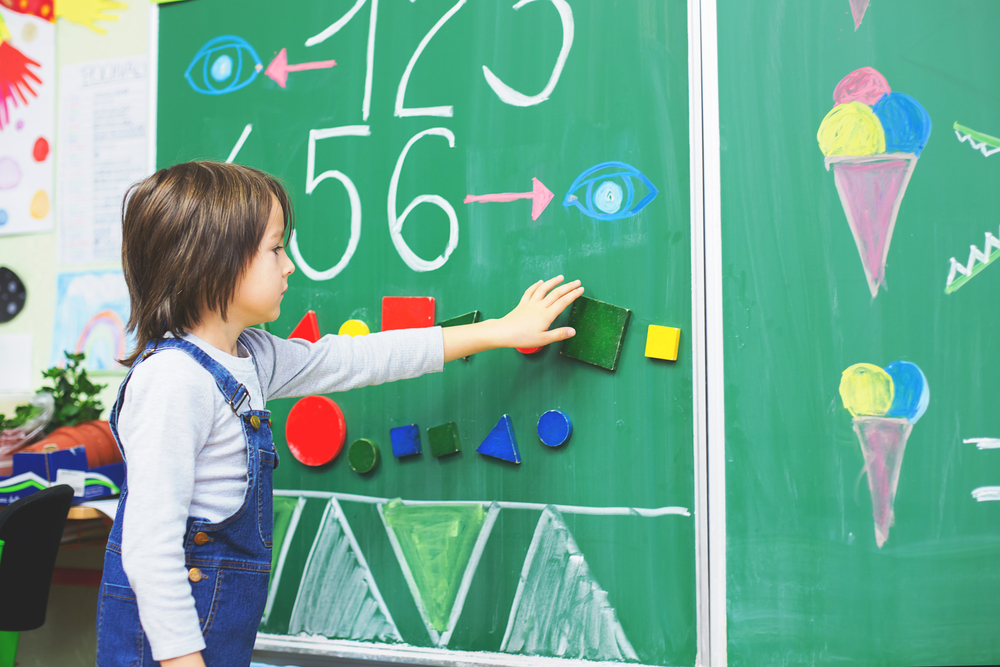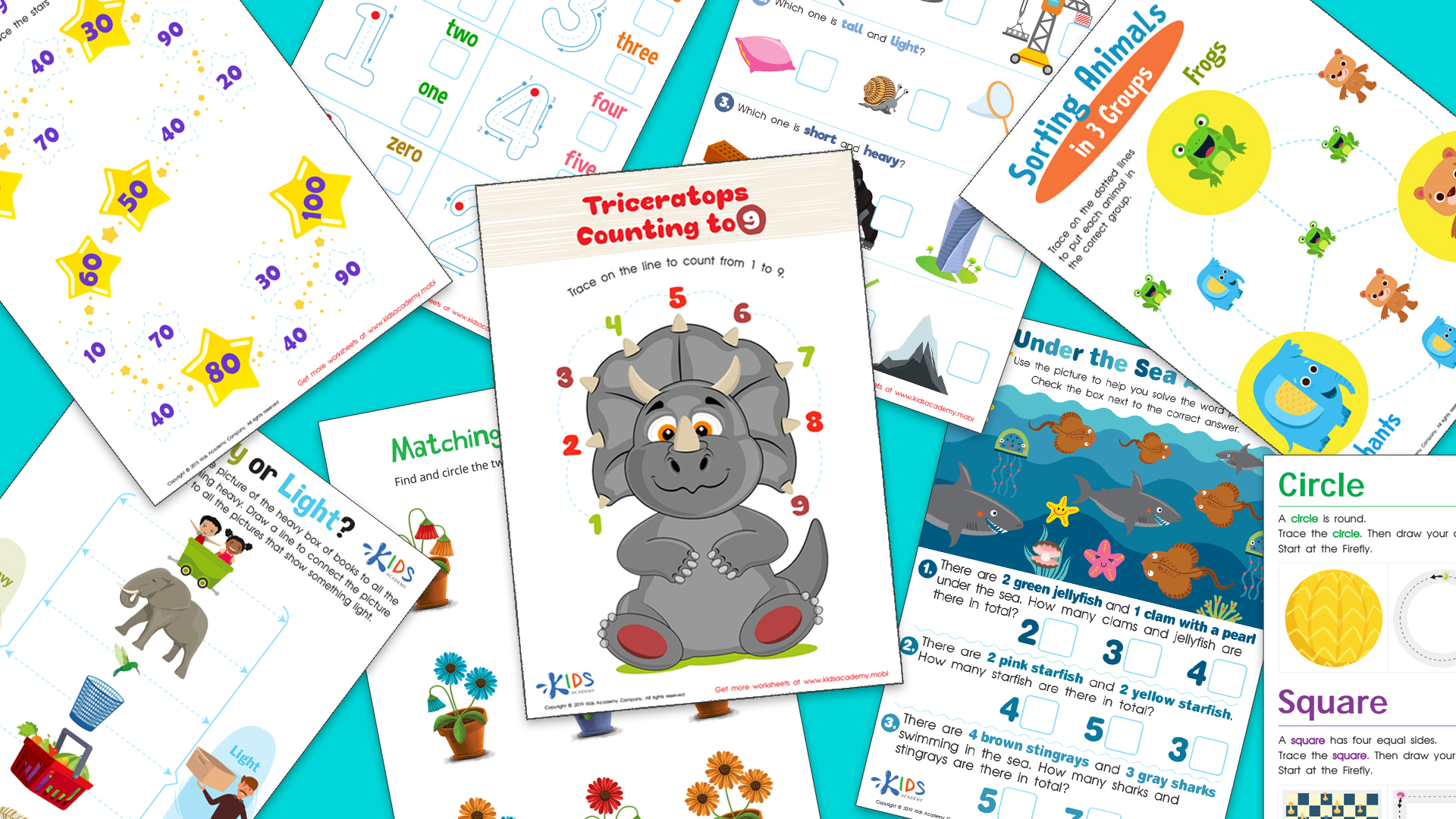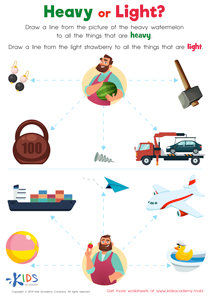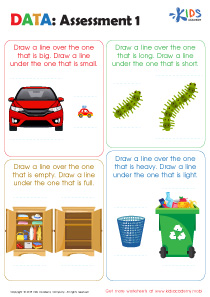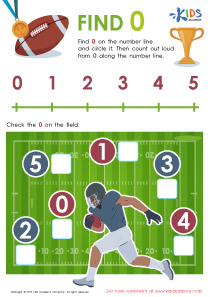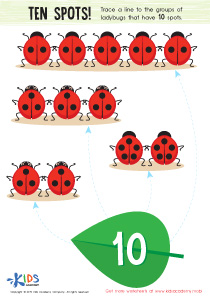Spatial reasoning Normal Geometry Worksheets for Ages 6-8
3 filtered results
-
From - To
Boost your child's spatial reasoning skills with our engaging Normal Geometry Worksheets for Ages 6-8! Designed to make learning fun, these worksheets help young learners recognize shapes, understand their properties, and solve spatial problems. Our age-appropriate exercises promote critical thinking, improve visualization, and build a strong foundation for future math success. With colorful, captivating activities, your child will eagerly explore how shapes fit together, enhancing their confidence in geometry. Perfect for classroom or home use, these worksheets are an excellent resource to support your child's educational journey in a playful and effective manner. Transform math into an adventure today!
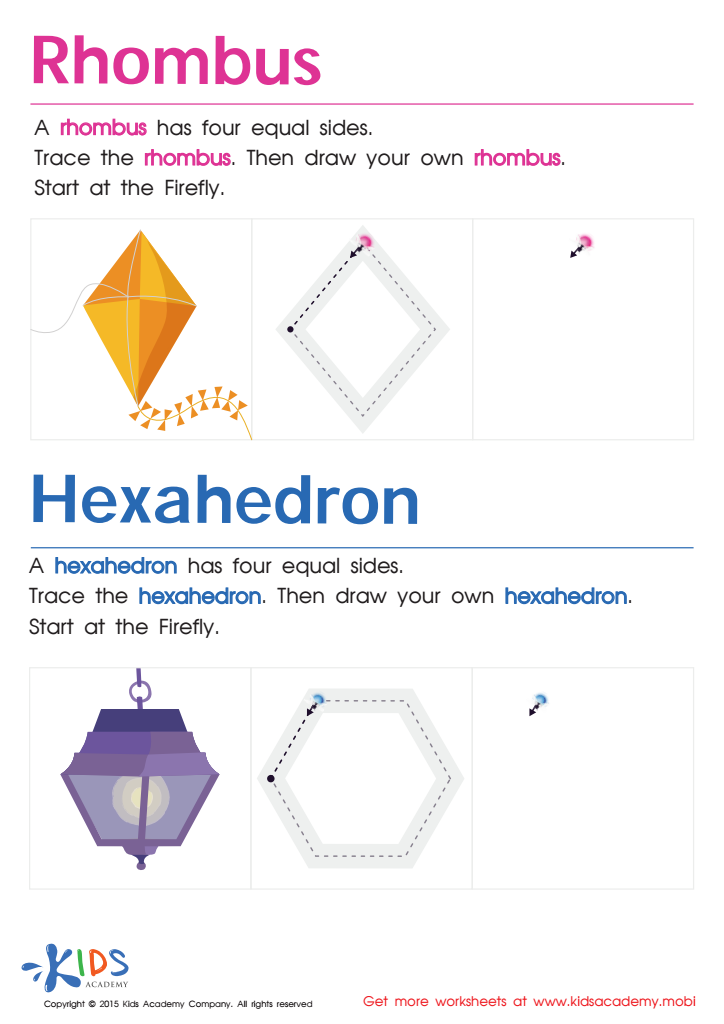

Draw a Rhombus And a Hexahedron Printable
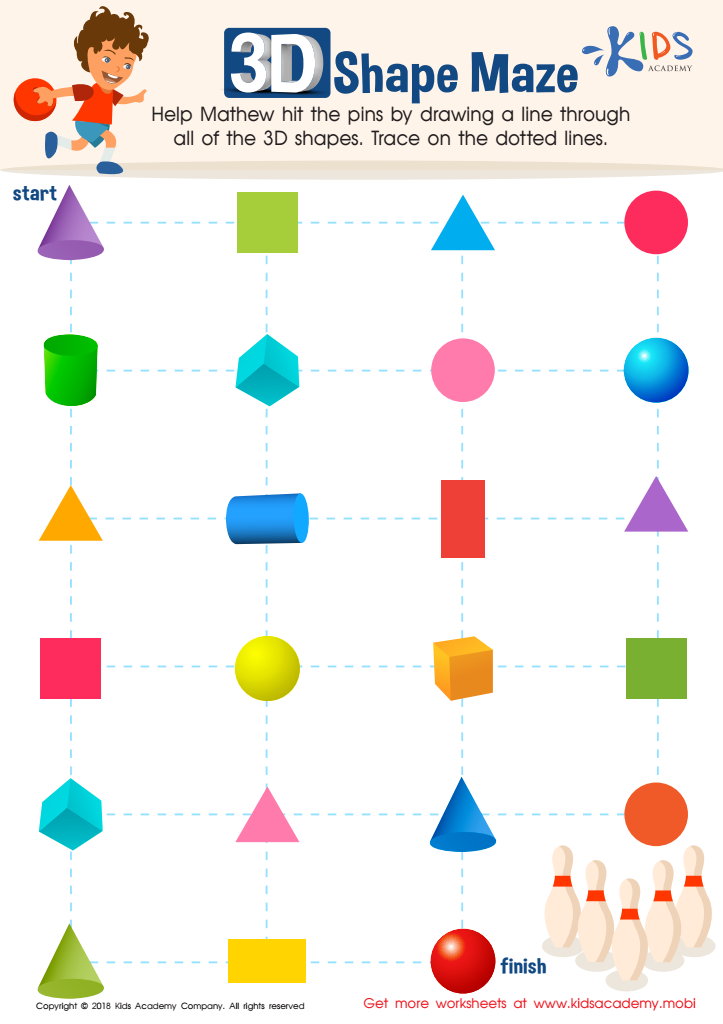

Shapes Maze Geometry Worksheet
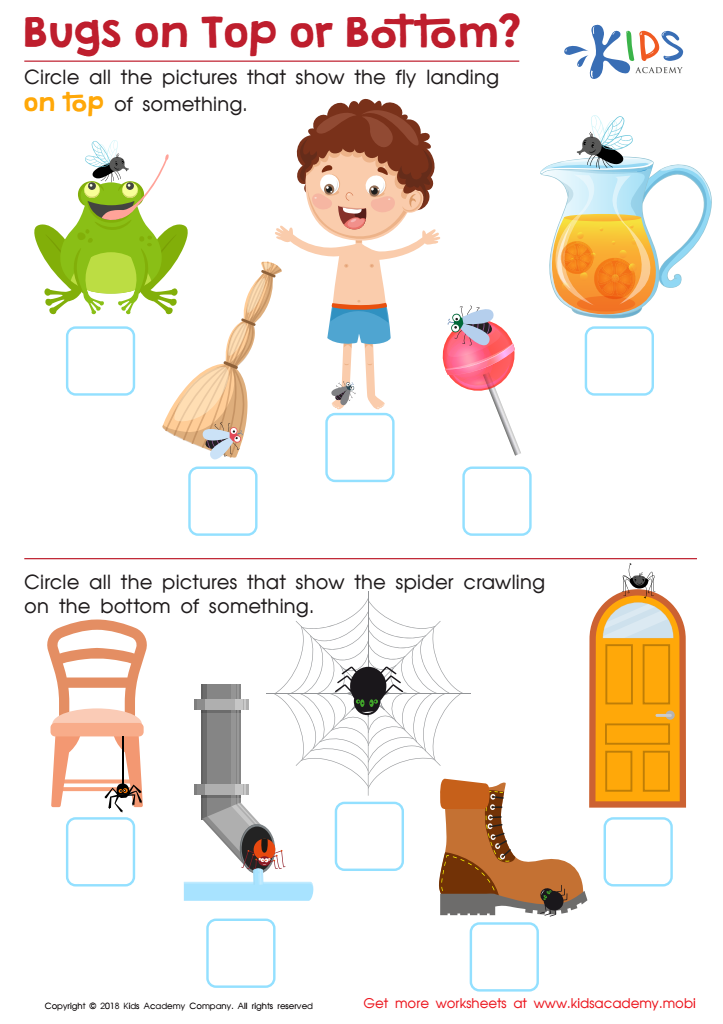

Bugs on Top or Bottom? Worksheet
Understanding spatial reasoning and normal geometry is crucial for children aged 6-8 because these skills form the foundation for more advanced mathematical and scientific thinking later in life. Spatial reasoning involves the ability to visualize and manipulate objects, understand their shapes and sizes, and grasp their positions in space. This cognitive skill helps children in everyday situations, such as following maps, solving puzzles, or understanding directions.
Investing in spatial reasoning at an early age enhances problem-solving abilities, as it encourages children to think outside the box and approach challenges from different angles. This development also builds a child's self-confidence in trying new things and in their academic performance.
Geometry teaching for young learners mainly involves basic shapes and understandings about how these shapes fit together. Teachers and parents who actively engage children with activities that promote spatial thinking are aiding in the development of hand-eye coordination, memory, and the ability to cope with complex visual-spatial relationships.
Moreover, early exposure to geometry helps children recognize patterns and connections between numbers and space, supporting future studies in fields such as engineering, architecture, computer science, and more. Essentially, nurturing spatial reasoning and geometric understanding in early education lays down critical cognitive groundwork for a child's academic and personal success.
 Assign to My Students
Assign to My Students





